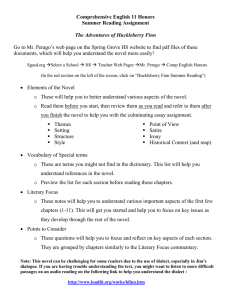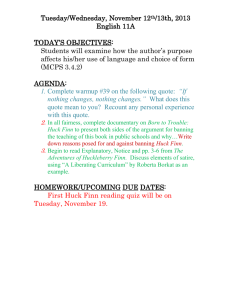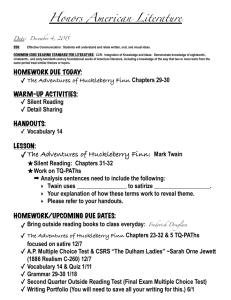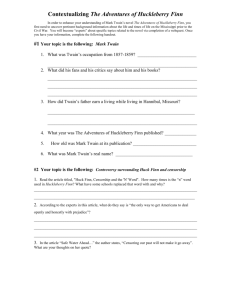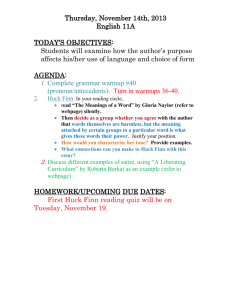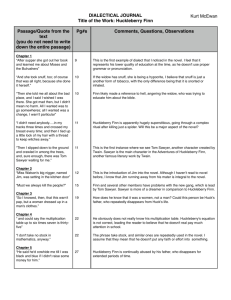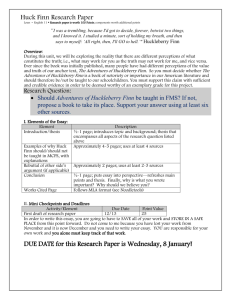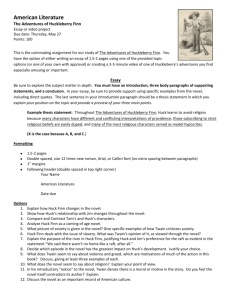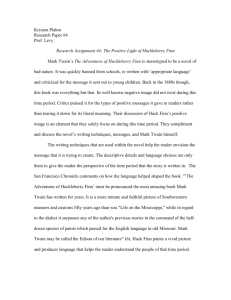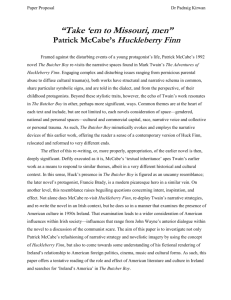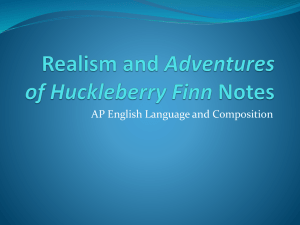Huck Finn Summer Reading Essay.doc
advertisement
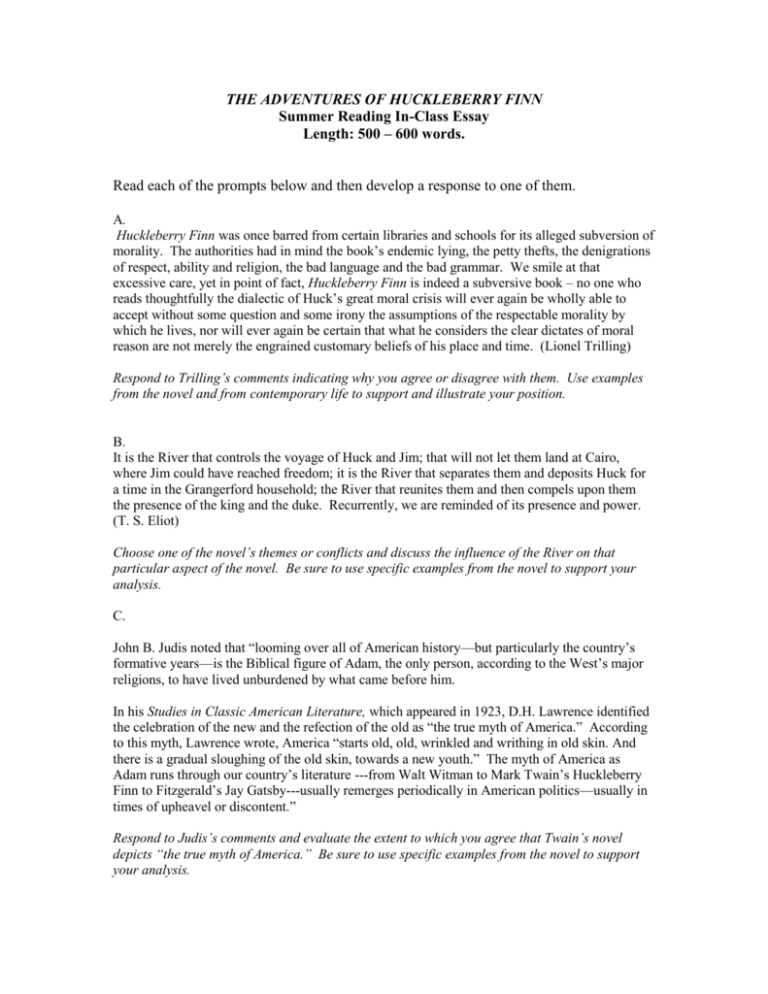
THE ADVENTURES OF HUCKLEBERRY FINN Summer Reading In-Class Essay Length: 500 – 600 words. Read each of the prompts below and then develop a response to one of them. A. Huckleberry Finn was once barred from certain libraries and schools for its alleged subversion of morality. The authorities had in mind the book’s endemic lying, the petty thefts, the denigrations of respect, ability and religion, the bad language and the bad grammar. We smile at that excessive care, yet in point of fact, Huckleberry Finn is indeed a subversive book – no one who reads thoughtfully the dialectic of Huck’s great moral crisis will ever again be wholly able to accept without some question and some irony the assumptions of the respectable morality by which he lives, nor will ever again be certain that what he considers the clear dictates of moral reason are not merely the engrained customary beliefs of his place and time. (Lionel Trilling) Respond to Trilling’s comments indicating why you agree or disagree with them. Use examples from the novel and from contemporary life to support and illustrate your position. B. It is the River that controls the voyage of Huck and Jim; that will not let them land at Cairo, where Jim could have reached freedom; it is the River that separates them and deposits Huck for a time in the Grangerford household; the River that reunites them and then compels upon them the presence of the king and the duke. Recurrently, we are reminded of its presence and power. (T. S. Eliot) Choose one of the novel’s themes or conflicts and discuss the influence of the River on that particular aspect of the novel. Be sure to use specific examples from the novel to support your analysis. C. John B. Judis noted that “looming over all of American history—but particularly the country’s formative years—is the Biblical figure of Adam, the only person, according to the West’s major religions, to have lived unburdened by what came before him. In his Studies in Classic American Literature, which appeared in 1923, D.H. Lawrence identified the celebration of the new and the refection of the old as “the true myth of America.” According to this myth, Lawrence wrote, America “starts old, old, wrinkled and writhing in old skin. And there is a gradual sloughing of the old skin, towards a new youth.” The myth of America as Adam runs through our country’s literature ---from Walt Witman to Mark Twain’s Huckleberry Finn to Fitzgerald’s Jay Gatsby---usually remerges periodically in American politics—usually in times of upheavel or discontent.” Respond to Judis’s comments and evaluate the extent to which you agree that Twain’s novel depicts “the true myth of America.” Be sure to use specific examples from the novel to support your analysis.
